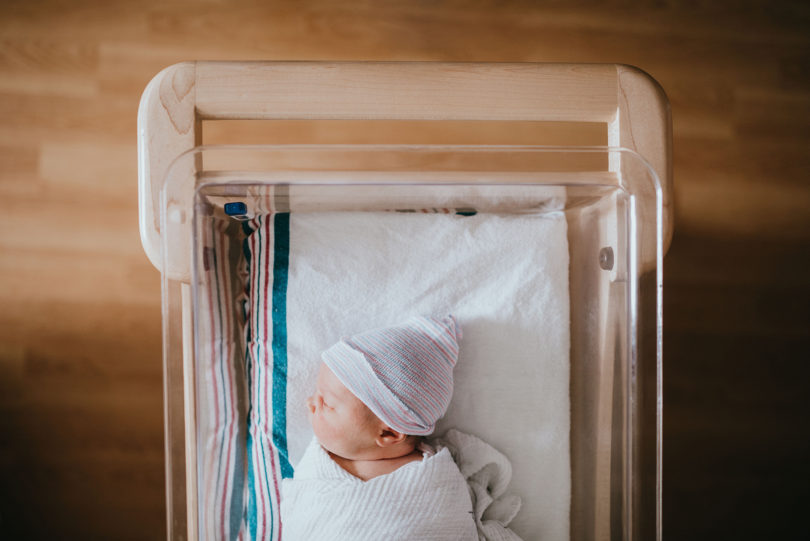Everyone’s seen the pleas seeking donations of blood or bone marrow. “Be a Lifesaver,” the headlines read. “Give the Gift of Life!” They’re not wrong, of course. But if you’re about to have a baby — there’s another way.
Donate umbilical cord blood.
Once something only available to those who wanted to pay — a lot — for storing cord blood in a private bank, or to those who had to jump through quite a few hoops to donate for research, donating cord blood for public use has become easier than ever in the past few years.
“Often women ask, ‘Can I donate?’ ” says Dr. Jeff Morrison, whose practice, TPMG Obstetrics & Gynecology, is urging women to donate to a public cord bank. “Now you can.”
Umbilical cord blood is unique in that it’s only available immediately after childbirth. Unlike mature blood, it contains a high number of stem cells. These stem cells, known as hematopoietic stem cells (HSCs), can be programmed by the body to become any type of blood component, including red blood cells, white blood cells and platelets.
There are more than 80 treatments approved by the Federal Drug Administration that use cord blood, including childhood leukemia, sickle cell anemia and other blood cancers and immune disorders. More than 25,000 patients around the world have received cord blood transplants, according to the National Marrow Donor Program, which has more than 295,000 cord blood units listed on its Be The Match Registry.
Cord blood, bone marrow and peripheral blood stem cells are the three sources of blood-forming cells used in transplants, according to Be The Match. Cord blood might be used in a transplant instead of bone marrow because it doesn’t have to be as closely matched to a patient, which might make it the better option for someone with an uncommon tissue type. Cord blood has a lower risk of something called graft-vs-host disease, which is when immune cells from the donor attack the recipient’s cells. Also, says Be The Match: “Cord blood units are stored and ready to use, so they’re quickly available when a patient needs a transplant right away.”
Public cord banks collect, process and store donated cord blood and make it available nationwide, although it can only be used for FDA-approved treatments and not experimental ones. The American College of Obstetricians and Gynecologists (ACOG) recommends public banking as the preferred method “of obtaining umbilical cord blood for use in transplantation, immune therapies or other medical validated indications.”
Cord blood can also be donated for medical research. Five years ago, Lianne Hedden donated her daughter’s cord blood to Carolinas Cord Blood Bank (CCBB) for research purposes. CCBB, part of the Duke University School of Medicine, is also one of the biggest public cord blood banks in the world.
“I liked the idea of making a difference in medical research, and the fact that it was really minimal work on my end made it appealing, too,” says Hedden, 32, from Newport News, Va. “Stem cell research is doing some amazing things and my daughter could be born with instant good karma.”
Private cord banking remains an option for women, although it can cost thousands of dollars to bank and maintain it through the years. Private banking means parents have exclusive use of their baby’s stem cells and are ensured a perfect genetic match should other family members need them.
However, Morrison says the need for a baby’s immediate family to need specific cord blood is low. Public banks are used 30 times more often than private ones, according to Harvard Health Publishing. And if enough women donate their baby’s cord blood, it’s more likely a match will be found quickly when the need arises, he says. It’s important that women of all ethnicities donate, since some blood diseases — such as sickle cell disease — tend to target specific populations.
And that’s where physicians come in. Part of the effort to promote public cord banking is to get obstetricians — the ones delivering the babies — on board. The doctor has to be willing to be a part of it. If the doctor agrees, the process takes a few steps. Women have to be screened, just as they would be if donating blood. Once approved, the company that will bank the blood sends a donation kit, which is used at the hospital after delivery. CCBB requires doctors and midwives in a practice to do a short online training session before participating.
Morrison, whose practice delivers babies at Mary Immaculate Hospital in Newport News and Sentara CarePlex in Hampton, has made sure those hospitals have collection kits on hand. He works with Florida-based Cord for Life, which started as a private cord bank but now also runs a public bank as well.
The cord blood is collected right after delivery: Once the umbilical cord has been clamped, the medical team extracts the blood from a vein in the cord, collecting it in a bag that looks similar to those used when donating blood. The bag is boxed up and shipped to the cord bank.
Since Morrison began recommending public banking to his patients about a year ago, he’s collected cord blood from about 40 women, who have been happy to donate to a public bank, he says. The key really is getting the word out. Hedden, who delivered her baby at Riverside Regional Medical Center in Newport News, says she had to do her own research to find ways she could donate her baby’s cord blood.
“It takes a little bit of effort to get it worked out, but if the patient wants to do it, we should get involved,” Morrison says. “It’s just a good cause. We should all be trying to make this happen.”







